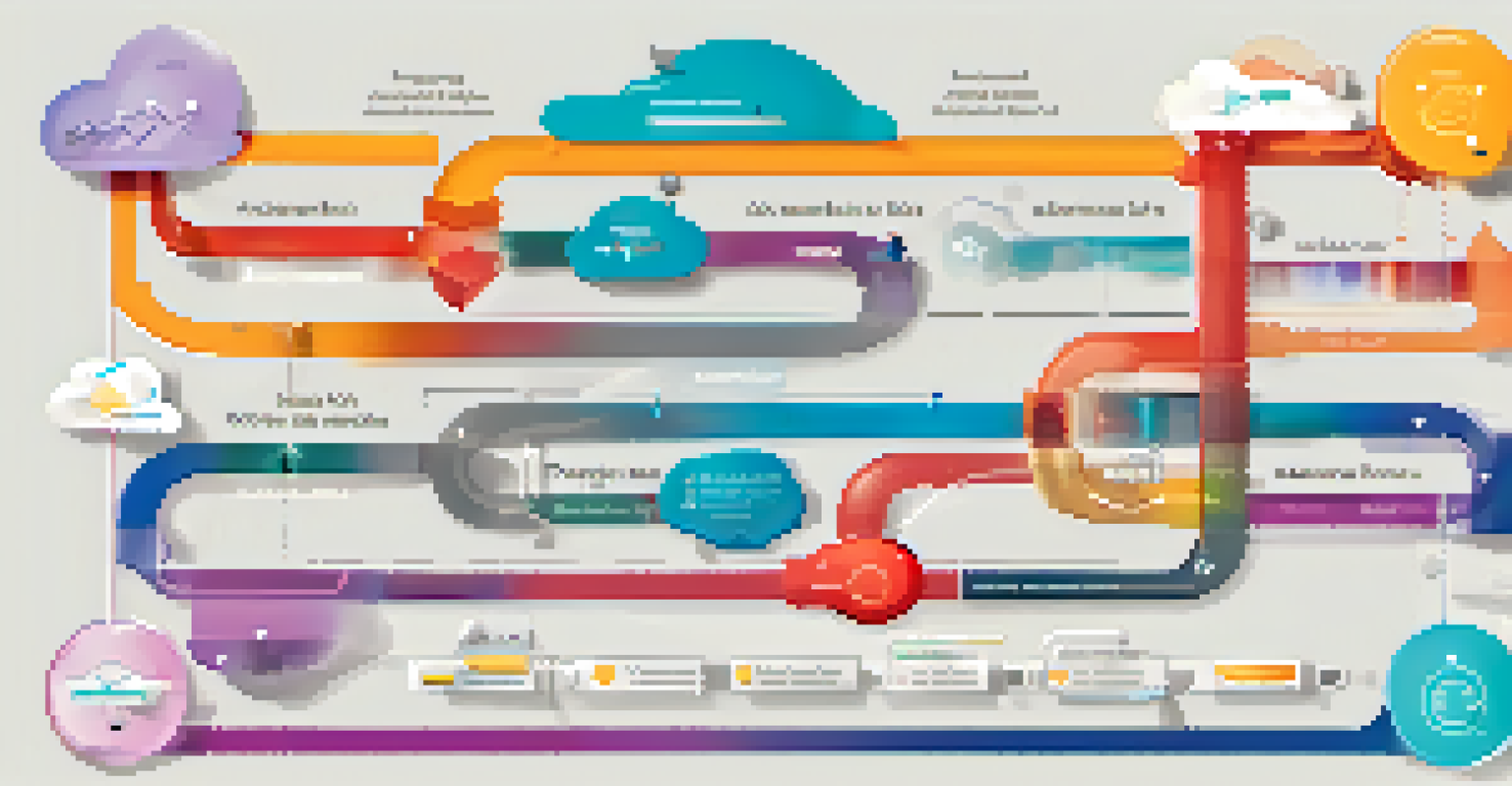How to Conduct a Data Inventory for Privacy Compliance

Understanding Data Inventory in Privacy Compliance
A data inventory is essentially a comprehensive list of the data your organization collects, processes, and stores. This inventory plays a crucial role in privacy compliance, as it helps organizations understand what data they have and how it's being used. By mapping out your data landscape, you can identify potential risks and areas needing attention.
Data is the new oil.
Imagine you are sorting through a messy garage; a data inventory is like creating an inventory list before you start organizing. You need to know what items you have to determine what to keep, discard, or protect. This clarity is vital for adhering to privacy regulations like GDPR and CCPA.
Ultimately, a well-maintained data inventory is not just a compliance checkbox; it's a strategic asset that enables organizations to manage data responsibly and transparently.
Identifying the Data You Collect
The first step in conducting a data inventory is identifying the types of data your organization collects. This includes personal data such as names, email addresses, and financial information, as well as non-personal data like analytics and operational data. It's essential to take a thorough approach, ensuring no data type is overlooked.

Think of this process as peeling an onion; each layer represents a different type of data. As you peel back these layers, you uncover everything from basic customer info to more sensitive data, which requires special handling. This awareness is crucial in creating a comprehensive data inventory.
Importance of Data Inventory
A data inventory is crucial for understanding the data your organization collects, ensuring compliance with privacy regulations.
By understanding the full scope of your data collection practices, you can better assess your compliance obligations, ensuring that you address all relevant privacy concerns.
Mapping Data Flows and Storage Locations
Once you've identified the data you collect, the next step is to map out how this data flows through your organization. This involves documenting where the data is collected, how it is processed, and where it is stored. A clear understanding of your data flows is essential for identifying potential vulnerabilities.
In God we trust; all others bring data.
Imagine a water system; if you don't know where the water comes from, where it goes, and where it is stored, how can you ensure it's clean and safe? Similarly, mapping your data flows helps you maintain data integrity and security. This process can also highlight areas where data may be unnecessarily duplicated or retained longer than needed.
By visualizing these data flows, you enhance your ability to comply with privacy regulations and to respond effectively to data subject requests.
Assessing Data Usage and Purpose
After mapping your data flows, it's crucial to assess how each type of data is used and for what purpose. This step helps ensure that your data collection practices align with the principles of data minimization and purpose limitation. You want to collect only the data necessary to achieve your business goals.
Consider this like a chef evaluating ingredients before preparing a meal; you wouldn't want to include unnecessary items that could spoil the dish. In data inventory, knowing the specific purpose of each data type helps you avoid over-collection and ensures you handle data responsibly.
Mapping Data Flows Enhances Security
Documenting how data flows through your organization helps identify vulnerabilities and maintain data integrity.
Understanding the purpose of data usage also prepares you for compliance audits and strengthens your overall privacy framework.
Evaluating Data Protection Measures
As you conduct your data inventory, evaluating your current data protection measures is essential. This includes examining security protocols, data access controls, and encryption practices. Identifying any gaps in your protection measures is crucial for ensuring compliance with privacy laws.
Think of this as a security check for your home; you want to ensure all doors and windows are secure before leaving. Evaluating your data protection measures helps you understand which areas need strengthening to protect sensitive information effectively. This proactive approach can prevent data breaches and compliance violations.
By regularly reviewing and updating your data protection strategies, you create a robust framework that supports privacy compliance.
Documenting Your Data Inventory Findings
After completing your data inventory, it's vital to document your findings meticulously. This documentation serves as a reference point for your organization, providing a clear overview of your data landscape. It also plays a key role in demonstrating compliance during audits or inquiries.
Imagine keeping a detailed logbook on a road trip; it helps you remember your stops, the distance traveled, and any important notes. Similarly, documenting your data inventory findings equips your organization with the necessary insights to navigate privacy regulations effectively.
Employee Training is Essential
Regular training on data privacy practices empowers employees, fostering a culture of accountability and trust.
Moreover, well-documented findings can facilitate ongoing training and awareness initiatives, ensuring that everyone in your organization understands the importance of data privacy.
Creating a Data Inventory Management Plan
With your data inventory documented, the next step is to create a management plan to keep it up-to-date. Data is dynamic, and changes in business operations, regulations, or technology can affect your data landscape. Developing a management plan ensures your inventory remains accurate and compliant over time.
Consider this plan as your data inventory's maintenance schedule; just like you wouldn't let your car go without regular check-ups, your data inventory requires periodic reviews and updates. This proactive approach helps you catch any potential issues before they escalate into compliance problems.

A comprehensive management plan will also empower your team to take ownership of data privacy and ensure that everyone understands their responsibilities in maintaining data integrity.
Training Employees on Data Privacy Practices
Finally, training your employees on data privacy practices is a critical component of ensuring compliance. Even the most meticulously maintained data inventory can be undermined by a lack of awareness or knowledge among staff. Regular training sessions help foster a culture of data privacy and accountability within your organization.
Think of this training as a safety drill; just as employees learn what to do in case of an emergency, they should also know how to handle data responsibly. Providing clear guidelines and scenarios can help employees understand their role in maintaining data privacy and compliance.
Ultimately, empowering your employees with the right knowledge and tools not only enhances compliance but also builds trust with your customers, who value transparency in how their data is handled.